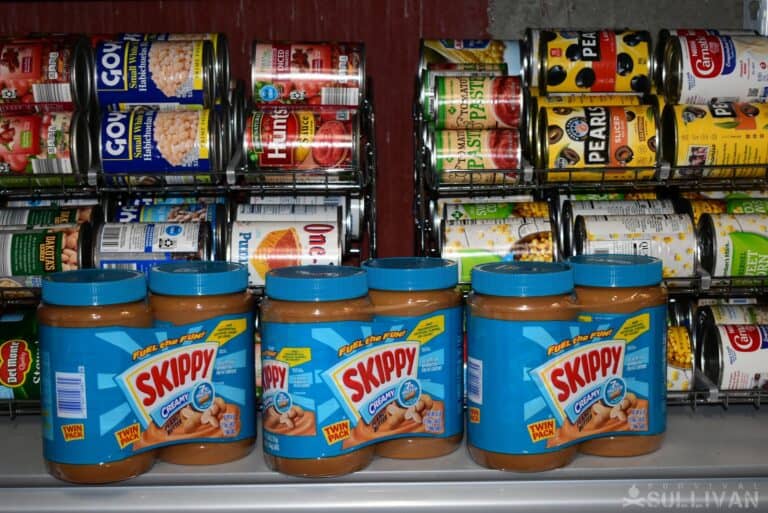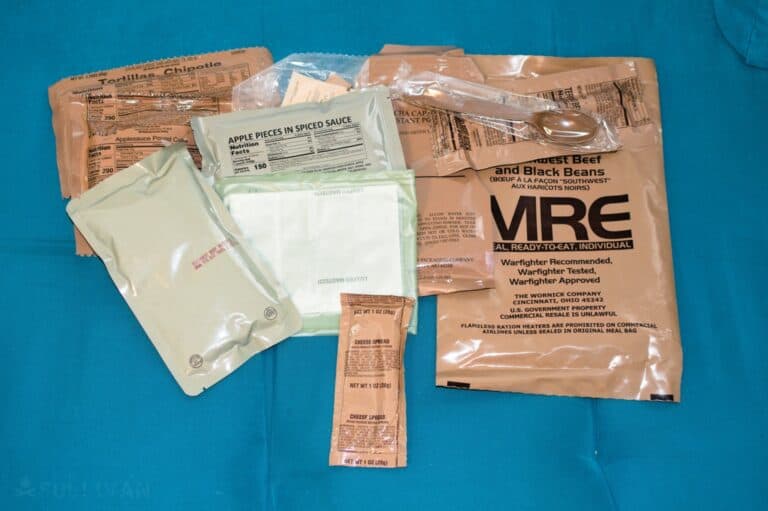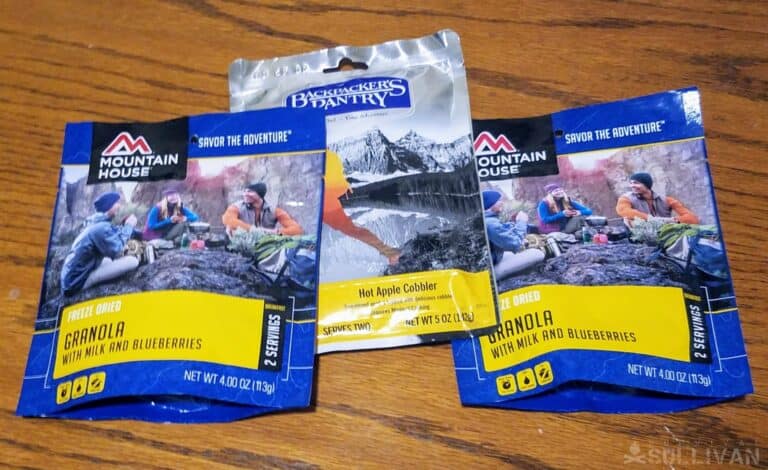If there’s one thing that apocalyptic movies got right, it’s that when faced with a disaster, people will strip the shelves of the nearest grocery store bare in a matter of days. People will rush in and out, grabbing anything and everything that they think can help them survive for a considerable period.
The grocery store quickly becomes a war zone and people will most likely grab anything they can regardless of the quality of the food.
And who’s to say that the disaster won’t last for longer? Thus, there’s great value in taking the time to know and understand the expiration dates that your foods have.
There’s a lot of value in knowing and comprehending the expiration dates on your food items. It is thought that expiration dates typically indicate when food is safe to eat.
These expiration dates are only an indication of the quality of the goods and not their safety.
If you’re trying to get ready for an emergency, disregarding expiration dates may be harmful, since it leaves you open to food poisoning illnesses. This article will talk about expiration dates from a prepper’s perspective.
Table of Contents
What the Expiration Date Really Is
Contrary to popular belief, the expiration date doesn’t only mean “best before.” Often, there are other labels that you will need to understand, especially if your goal is stockpile food that can last at least year.
The only item the government requires to have an expiration date printed on it is infant formula. So, if you stockpile properly, you need to find a way to understand the somewhat arbitrary expiration dates printed on other things.
Deciphering Expiration Date Codes
There are two types of expiration dates that you will commonly find on food items: “sell by” and “use-by”.
The “sell by” date is when the store should pull the product from their shelves, but it is still safe to eat after that date if properly stored.
The “use by” date is the last day that the product is considered safe to consume, even if it is properly stored. After that date, the food may start to spoil and become dangerous to eat.
The dates on food products can be confusing since manufacturers use a variety of codes to indicate the sell-by or best-by date on their food, and these codes don’t always make sense to the uninitiated.
To further complicate things, sometimes the printed date is the date of production, and that means you’ll need t use a little figuring to make an informed guess about the shelf life of the item in question.
Sometimes the date code won’t be printed in an obvious or convenient place on the packaging, so looks closely for digits that appear like any of the following:
- mmddy – Month, day of the month, last digit of the year, e.g. 01101, January 10th, 2021. Letters indicate info like lot, batch, factory, etc.
- yddd – Last digit of the year, day of the year, e.g. 1031, January 31st, 2021 (the 31st day of 2021).
- mmddyyA – Month, day of the month, last two digits of the year, e.g. 030920, March 9th, 2020. Letters indicate info like lot, batch, factory, etc.
- dddyyAX – Day of the year, last two digits of the year, e.g. 09120AX, 30th day of March, 2020. Letters indicate info like lot, batch, factory, etc.
If you’re trying to stock up on food items in case of an emergency, pay attention to the “use by” dates rather than the “sell by” dates.
Canned goods, for example, usually have a long shelf life and can be safe to eat long after the prescribed “sell by” date has passed.
However, perishable items like milk or meat will go bad quickly after the “use by” date has passed, so it’s important to consume them before that date or freeze them for later use.
It is also important to note that expiration dates are only a guide. If you’re not sure whether a food item is still safe to eat, it is always better to be safe than sorry and throw it away.
Food poisoning can be a very serious illness, so don’t take any chances with your health. By following these tips, you can make sure that you are stocked up on food items that will last long past their expiration dates.
Are Expiration Dates Really Dependable?
In general, expiration dates are not really reliable. There are many occasions where items have been found to be safe after their expiration date. This is usually due to the way that the food was stored or because of an ingredient or special production process.
For example, if you have a can of soup that has expired, but it has been stored in a cool, dry place, it may still be safe to eat.
However, if the soup has been left out on the counter for a few days or exposed to high temperatures, it is likely that bacteria will have started growing and it is not safe to consume.
Several factors contribute to the actual shelf life of various foods, aside from the type of the food itself, including:
- Ambient Temperature
- Temperature Shifts
- Exposure to Light/Opacity of Container
- Type/Quality of Container
- Integrity of Container
- Presence of Additives or Chemical Preservatives
- Handling and Storage Practices
All of these factors will affect how long a food item will last before it starts to degrade. For example, foods that are high in fat or salt tend to have a shorter shelf life than leaner foods.
This is because fat and salt can act as preservatives, whichUp to four years help to prevent bacteria from growing. On the other hand, foods with high sugar content usually induce spoilage over time, even though sugar can act as a preservative, too.
Additionally, exposed surfaces on food items will spoil faster than sealed or protected surfaces. This is why pre-cut fruits and vegetables often have a far shorter shelf life than whole fruits and vegetables.
The Real Shelf Lives of Common Food Preps
The following dates are the genuine shelf lives of commonly stashed prepper foods,
assuming they are kept in ideal but typical storage conditions.
| Beans, Dried | Up to 20 years. |
| Bouillon Cubes | Up to four years |
| Hard Liquor | 25 Years+ |
| Salt | indefinite if kept totally dry. |
| Sugar | 6mo. to 1 year |
| Rice, White | 20-30 Years+ |
| Pasta | 5+ years. |
| Green Beans, Canned | 2 to 5 years. |
| Corn, Canned | 2 to 5 years. |
| Carrots, Canned | 2 to 5 years. |
| Soup | 2 to 5 years. |
| Broth | 1 to 3 years. |
| Baking Soda | Indefinite if kept dry. |
| Flour | 1 year in airtight container |
| Beef, Canned | 1 to 2 years. |
| Chicken, Canned | 1 to 2 years. |
| Tuna, Canned | 2 to 5 years. |
You can find more suggestions here.
Aside from the items above, many spices have a shelf life ranging from two to five year. When stored properly, you may even have the chance to extend the quality well beyond the expiration date.
Canned Goods, MREs and Freeze-dried Food
When starting a stockpile, the first thing that you must consider is shelf life. You should consider how long the goods will last and if it’s enough to help you survive for a significant period.
A common goal is to stockpile enough supplies for at least a year regardless of what disaster you anticipate. Stockpiling for one full year is enough to ensure that when the time comes, you and your family won’t be forced to join the fray at the nearest grocery store to survive.
The most common things that most people stock up on are canned goods, meals ready to eat (MREs), and freeze-dried foods. These goods take at most 25 years to expire, and with attention to proper storage techniques, they can last longer than the printed best before date.
Thus, for you to fully maximize the potential and quality of these goods, you will need to learn a few things about expiration dates and storage for each type.

Canned Goods
The common misconception about canned goods is that they can last forever. According to USDA, this is wrong because their shelf life depends on the level of acid the food contains.
If the acid level is low to moderate, like vegetables, fish, and meat, shelf life can hold be as much as five years.
On the other hand, if the acid level is high, like in canned tomatoes and citrus fruits, shelf life is reduced to one and a half years.
The general rule for them is that although they can last for up to five years, plan to consume them within two years from the manufacture date.
If at some point, you wonder about the nutrients and vitamins you get from eating canned goods, don’t worry. The good news is that it canned vegetables can retain the mineral content for the entirety of its shelf life.
Although a percentage loss of nutrients is expected, particularly in foods containing vitamins A and C, the rate of nutrient loss diminishes with proper storage.
The best way to stockpile canned goods is to follow the first in, first out rule. Label the cans individually and make sure that you indicate the expiration date and manufacture date (if applicable) with clear visibility.
Labeling canned goods in this way will ensure you know which goods are still fresh and will help you track which ones are going to expire soon.
Another thing about canned goods is that you can extend its shelf life by storing at room temperature away from direct sunlight or in a dark area. Regularly check the state of the storage and the cans itself.
If you see any signs of deterioration like rust, or if there are dents, don’t risk eating it. The same goes if you spot any signs of leaking or bloating MREs.

Disclosure: This post has links to 3rd party websites, so I may get a commission if you buy through those links. Survival Sullivan is a participant in the Amazon Services LLC Associates Program. As an Amazon Associate, I earn from qualifying purchases. See my full disclosure for more.
MREs
Originally manufactured for soldiers and astronauts, MREs have been popular since the 1970s.
Each MRE packet contains a complete and tasty meal. MREs arrive wrapped in three layers of plastic and aluminum pouches which make them perfect for stockpiling.
The shelf life of MREs varies depending on the storage temperature. The most current estimated shelf life chart is from 2010:
| Temperature (F) | Shelf Life (months) |
|---|---|
| 120 | 1 |
| 110 | 2 |
| 100 | 6 |
| 90 | 18 |
| 80 | 36 |
| 70 | 40 |
| 60 | 48 |
| 50 | 60 |
As you can see, the official position is that they can be stored for a duration of one month to five years, depending on the temperature in the storage area. Of course, there have been accounts of longer shelf life reported by individuals.
To extend the estimated shelf life, take care not to rip, tear, or otherwise damage the MREs packaging. Any MREs with ruptured, punctured or swelling should be discarded or used only as a last resort.
Another indicator of the quality of MREs is the time and temperature indicator (TTI) officially added to the front of the packaging in 1997.
The TTI looks like a donut with bold and black outer circle and a clear inner circle. If the inner circle is lighter than the outside, that MRE is still safe for consumption.

Freeze-Dried Food
Freeze drying food is one of the most effective ways of removing moisture and water. Compared to dehydrated and sun-dried foods, freeze-dried food lasts longer and retains more vitamins and minerals.
According to reports, this dehydration process removes about 98% of moisture which makes the food light and easy to carry.
The average shelf life of freeze-dried food is two to 25 years and more. The variation depends on the location of your storage and the consistency of its placement.
Simply put, if you store the goods in a dry and cold location, and if you keep it in there until the time you plan on eating it, the shelf life will be longer.
Heat returns the moisture, and the fluctuating temperature attracts bacteria which accelerates the process of rotting.
The only disadvantage with freeze-dried food is the freeze-drying process requires a lot of energy and effort to pull off.
But aside from that, these goods can last for a very, very long time. Freeze drying makes food very light which means it is possible to carry more food with you, especially when you need to bug out.
Preservative Additives and Oxygen Removal for Even Longer Shelf Life
There are a few ways to increase the shelf life of food beyond what is normally achievable with traditional packaging methods.
One way is to add preservative additives such as sodium benzoate or potassium sorbate to your foods.
These chemicals can help to prevent the growth of mold and bacteria, which will extend the shelf life of your food. Another way to increase the shelf life of your food is to remove the oxygen.
This can be done by using oxygen absorbers or vacuum packaging. By removing the oxygen, you are essentially killing off any bacteria or mold that may be present and preventing it from growing.
Food that comes packaged in such a way or has either of the named preservatives (among others) added will benefit from greatly extended shelf life compared to the nominal ones listed above.
What About the Expiration Dates on Non-Food Items?
It’s not just food that has expiration dates. Many other items in your home, such as medications, cosmetics, and cleaning products, also have expiration dates.
These expiration dates are usually pretty reliable; however, there are a few things to keep in mind.
First of all, these expiration dates are often based on the quality of the product, rather than the safety. This means that the product may still be safe to use after the expiration date; however, it may not be as effective.
For example, an expired bottle of shampoo may not lather as well or an expired tube of mascara may not give your lashes as much volume.
Additionally, these expiration dates are often conservative estimates. This means that you can usually safely use a product after its expiration date as long as it has been stored properly and is not visibly contaminated.
One thing to keep in mind is that products with alcohol or other chemical solvents can lose their potency over time, even if they are still safe to use.
So, if you have a product that you’ve had for a while and it doesn’t seem to be working as well as it used to, it might be time to toss it out.
Medications: Up to 60% of medication past the expiration date is still effective. See section below.
Cleaning Products: Indefinite shelf life if kept dry.
Cosmetics: Indefinite shelf life if unopened; up to 12 months after opening.
As a general rule, any non-food item that has undergone a dramatic change in texture, color or odor is to be considered suspect and potentially discarded. Proceed with caution!
Medicine
Medicine and antibiotics are one of those items that often don’t have specific information regarding the expiration dates and shelf life. In a critical situation, your situation might take a turn for the worst if you drink or otherwise use medicine that has long since expired.
Fortunately, all medicine manufacturers are required to print an expiration date on the packaging. The date indicated is when the medicine will start to lose its optimal potency thereby making it less effective, and at times, fatal.
The general rule is that medicine can last for two to five years under favorable storage conditions. Solid drug forms like pills, tablets, and capsules fall into this category. Medicine in liquid form are less stable and expires faster, so shelf life is more difficult to estimate.
Once you open a bottle of liquid medicine, it’s best to use it before the expiration date indicated. Injectable drugs that show signs of precipitation or look cloudy should not be used.
Interestingly, there are no studies that indicate whether it’s safe to use expired drugs. It’s believed that some of the common ones, like that for a cough and fever, can be ingested well beyond the expiration date.
Those that relieve more complicated illnesses like heart failure, and diabetes should never be used beyond the date.
If you’re not sure as to whether you should still use the medicine you’ve stockpiled, consider the storage conditions. Longer shelf life and maximum potency can be achieved if it’s stored in a place that is cool, dry and dark. Avoid extreme temperatures and always check the seal.
Tips for Extending Shelf Life
- Get the temperature right. Extreme cold or heat can ruin just about anything in your stockpile. The safest is room temperature, but if you can find a place that is naturally cold like root cellars, that will give you the best shot at extending shelf life.
- Once you’ve opened or sliced through something, consume it as soon as you can. Leftovers can only last for so long (two to four day). Plus, breaking the seal is going to dramatically decrease shelf life. You will only have so much time before your stockpile will be infested with bacteria and viruses
- Consider the packaging. This is very important because aside from the storage conditions, it is one of the things that can extend shelf life for almost double the duration. For example, good wrapped in Mylar last longer because it’s airtight and it keeps it at room temperature at least.
- Know the signs of rotten items. If it smells bad or if it looks weird, don’t risk it. This is especially true when it comes to medicine. Extending the cumulative shelf life of your stockpile will only work if you get rid of those that are nearing end of the line.
- Keep track of expiration dates. Organize your stockpile in such a way that the older goods are in front. If you can label every item, do so. Strictly adhere to the first in, first out rule.
Always Be Careful with Expiration Dates
Expiration dates are a valuable tool that can help you to keep track of the freshness of your food and other household items.
However, it’s important to remember that these dates are only an indicator of the manufacture date or the maker’s recommended time to consume or use the product, not safety.
Additionally, many products remain effective long after their expiration date. So, next time you’re cleaning out your pantry or medicine cabinet, don’t be too quick to toss out those expired items. You may be surprised at how much life they still have left in them.
Do you have any tips for extending the shelf life of food or other household items? Share them in the comments below! And don’t forget to check back for another informative blog post.
updated 03/01/2022

My dad was military. My grandfather was a cop. They served their country well. But I don’t like taking orders. I’m taking matters into my own hands so I’m not just preparing, I’m going to a friggin’ war to provide you the best of the best survival and preparedness content out there.
